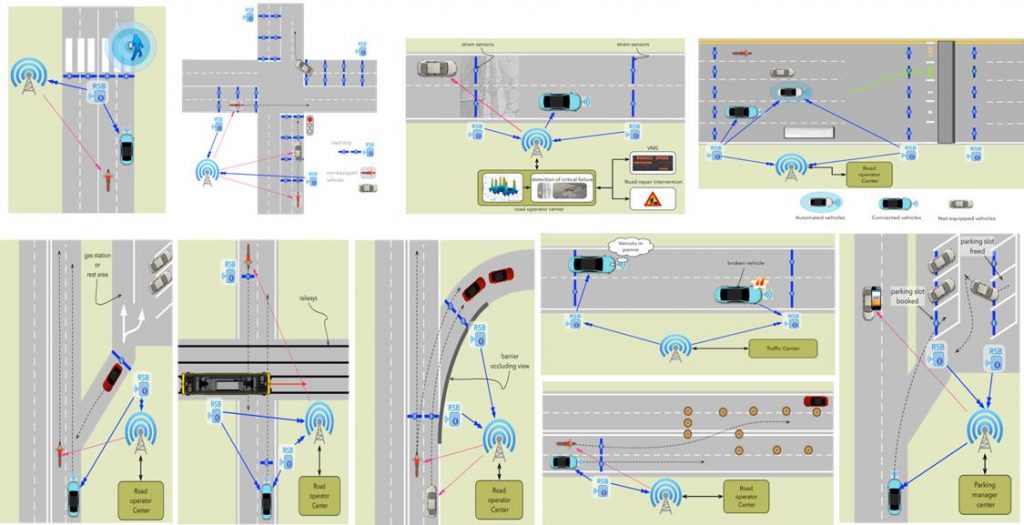Along March and April CIDAUT will be in charge of the user trials of the European Project SAFE STRIP. The trials will involve 20 drivers and 10 riders that will test different safety applications installed in autonomous vehicles and also in standard vehicles C-ITS equipped. SAFE STRIPS aims to introduce a disruptive technology that has achieved to embed C-ITS applications in existing road infrastructure, including novel I2V and V2I, as well as VMS/VSL functions into low-cost, integrated strip markers on the road; to make roads self-explanatory (with personalized in-vehicle messages) and forgiving (due to advanced cooperative functions) for all road users (trucks, cars and vulnerable road users, such as PTWs riders) and all vehicle generation (non-equipped, C-ITS equipped, autonomous), with reduced maintenance cost, full recyclability and added value services, as well as supporting real-time predictive road maintenance functions.
SAFE STRIP consortium is formed by 18 partners that have collaborated for three years in the development of innovative solutions to improve safety, mobility, efficiency, emissions and society. Some of the partners, Valeo, Continental and Certh are using their autonomous vehicles to test the applications developed. The scenarios to be tested are: vulnerable road users protection, wrong way driving detection, road wear level and predictive road maintenance, work zone detection, railway crossing detection, urban intersection support, motorway exit, virtual variable message signals, dynamic trajectory estimation, definition of lane-level virtual corridors, virtual toll and parking support.
Along the tests CIDAUT will make pre and post questionnaires to the users that together with the data registered in the trials and the traffic flow simulations made by the University of Trento will provide all the information needed to make an impact assessment about the influence of the solutions adopted in safety, mobility, efficiency and exhaust emissions. In parallel, a cost benefit analysis will be performed to determine the economic availability of the different solutions implemented.
